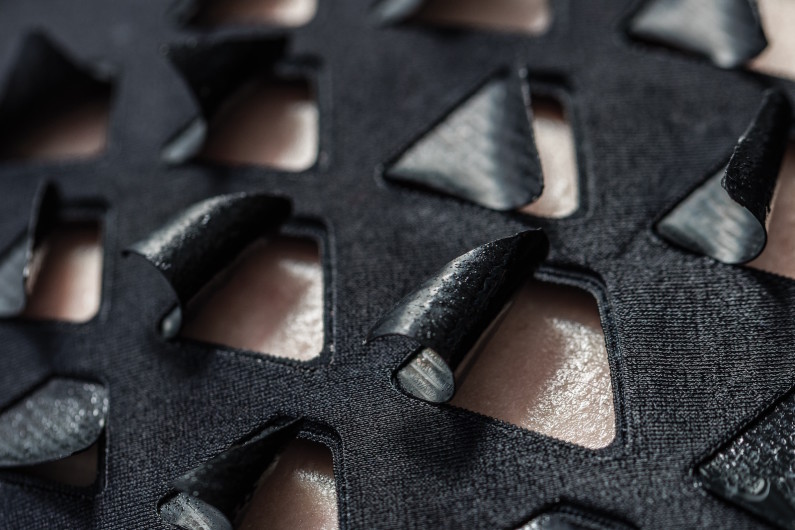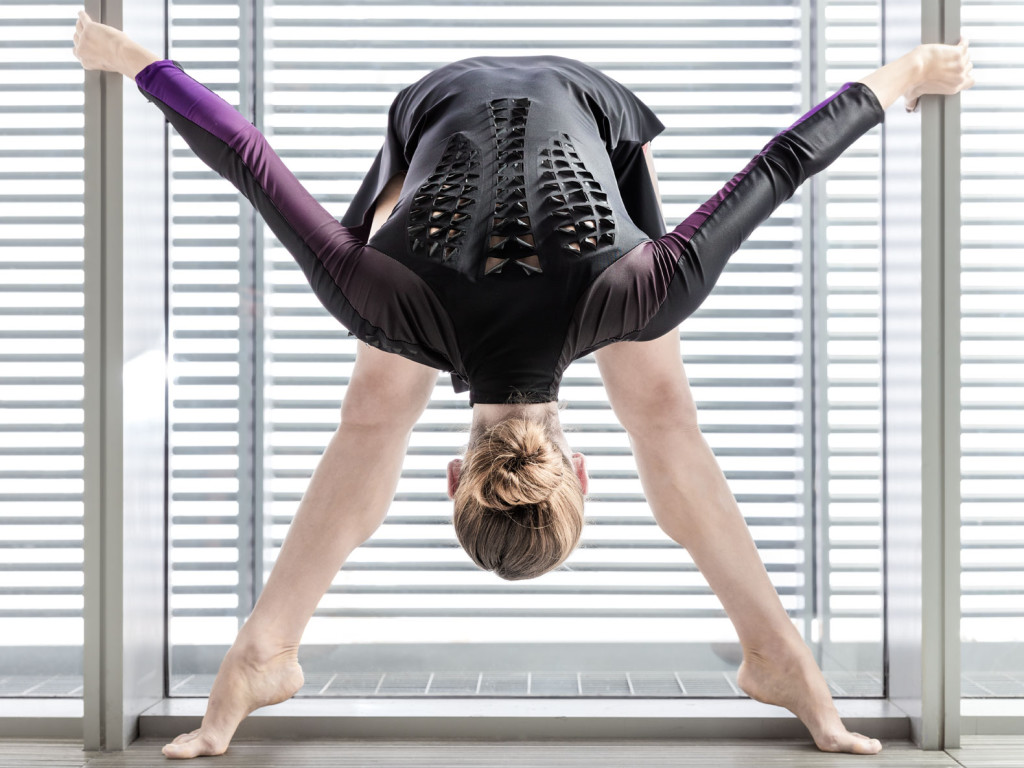Leave it to scientists at MIT to create the sportswear of the future — and expect it to look a lot more than a superhero costume than jersey. Recently, researchers at MIT Media Lab’s Tangible Media Group have been using an ancient bacteria to develop a self-ventilating second skin.
The bacteria was discovered 1,000 years ago in Japan, but only now is it being repurposed as a wearable solution to bodily sweat. With the bacteria, scientists have developed a natto material called BioLogic that physically morphs when exposed to moisture. Tiny flaps in the material open when the body within reaches certain humidity conditions so that the sweat can evaporate.
How does it work? Well, first the cells were grown in bioreactors, then molded for use in a micro-resolution printer so it could be bioprinted onto wearable fabrics. The film deposits were then sent off to the Royal College of Art, who integrated them into clothing by pinpointing which parts of the body sweat the most.[embedyt] http://www.youtube.com/watch?v=q7mR_rKdK6M[/embedyt]
Unsurprisingly, sportswear manufacturers are incredibly interested in this innovative development. New Balance is one such company invested in the process. For athletes, this could mean light, breathable clothing that keeps your sweat from saturating workout clothes or uniforms by responding to your body to open up ventilators.
There’s a bigger picture here, of course. Biologically sensitive material opens as many doors as it does flaps far outside the world of athletics. Researchers are thinking about color-changing clothes, lampshades that respond to light, flowers that blossom and change color when watered, and steam-activated teabags.
So basically, if you’re a human that runs, has a garden, uses artificial light, drinks tea or all of the above, it’s entirely possible you’ll encounter BioLogic or a BioLogic-like material in the future. Who ever though bacteria on your skin and in your hot beverage would be a desirable thing? Not me, but apparently innovation knows no boundaries.



